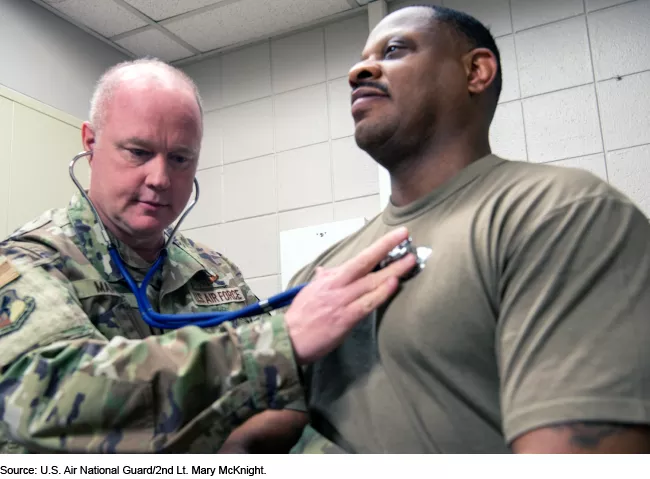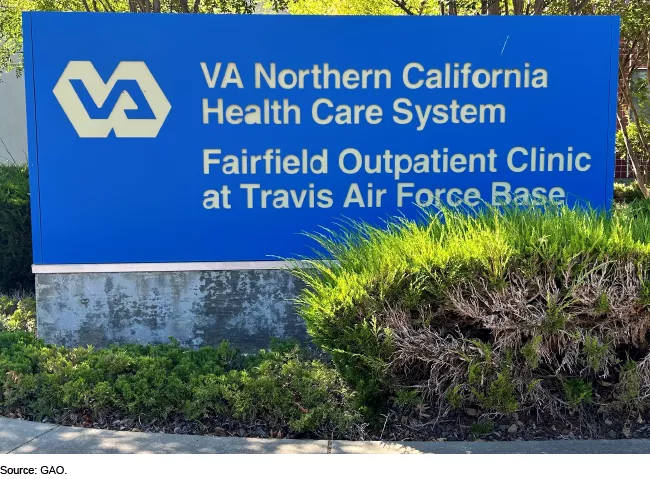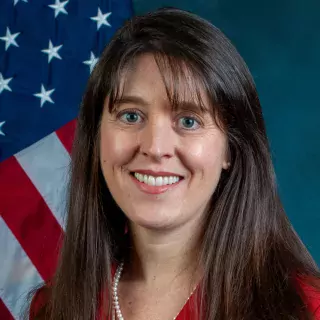How VA and DOD Are Working Together to Improve Health Care Access
The Departments of Veterans Affairs and Defense operate two of the nation’s largest health care systems. Together, they provide care to more than 18 million veterans, military retirees, service members, and their families each year. To improve access to this care, VA and DOD have agreements to share health services and other resources.
We recently looked at how these agreements are working. Today’s WatchBlog post highlights our new report about what we found.
Image

What’s working with VA’s and DOD’s sharing agreements?
The VA and DOD have about 185 agreements nationwide that allow them to share services or facilities. These agreements are generally between medical centers and facilities located in the same geographic region. And most are good for up to 5 years—then renewed as needed.
The goal? Improving patient access to care, sharing resources, and saving money.
Sharing agreements improve access to health care by:
- Allowing VA and DOD to refer patients to each other’s medical centers and facilities. This is useful when, for example, a veteran may be treated at a DOD facility for specialty care like surgery, orthopedics, or mental health.
- Allowing some staff to work at both VA and DOD facilities—giving patients access to certain specialists and letting doctors treat those patients with the greatest needs.
- Sharing space at facilities. For instance, officials at one facility told us their sharing agreement allowed DOD cardiothoracic surgeons to use VA facilities’ operating rooms once a week to treat veterans.
- Sharing nonmedical services, such as physician training or laundry services.
Sharing agreements can save the federal government money, too, by:
- Reimbursing each other at a discounted rate for care. For example, the cost is typically 20% lower than what they would pay for similar care from civilian or community providers.
- Sharing underutilized resources or services, such as excess space or capacity, to provide medical care. For example, the VA pays $8,000 to rent space at a DOD dental clinic on a military base. That rent is significantly less than the nearly $50,000 it would pay to lease space at a private dental clinic in the community.
Department of Veterans Affairs Medical Clinic Located on a Military Base
Image

What needs more attention to improve these agreements?
While sharing agreements can improve access in many cases, that hasn’t been true for all. Some issues include veterans’ inability to access some military bases, incompatible electronic health records systems, and differing billing practices.
Gaining entry to military bases. Officials from more than half of the 12 VA and DOD sites we visited said getting on to a military base to get care has been an obstacle for many veterans. The process for getting on base can be complex—involving background checks, pre-approvals, and more.
Incompatible data systems and billing practices. VA and DOD have different systems to manage patient health records, and their billing processes differ—making the exchange of information difficult.
For example, officials at one site told us that staff often have to document patients’ medical records separately in the two departments’ electronic medical records systems. This has increased the risk of errors and frustrations for staff.
Officials at 9 of 12 sites we visited said this has also resulted in payment delays for DOD medical claims. One official told us that DOD limited the number of VA referrals accepted because it wasn’t being reimbursed for the services provided.
To their credit, VA and DOD have taken steps to improve how veterans can gain entry onto military bases. They’ve also been working to improve the exchange of information between their data systems and have formed work groups to help resolve issues with business and billing processes.
But we think there’s more the departments could do. In our new report, we recommended ways to address these issues. We also think VA and DOD should take a closer look at their data to determine if changes are needed and identify opportunities to expand the use of sharing agreements.
- GAO’s fact-based, nonpartisan information helps Congress and federal agencies improve government. The WatchBlog lets us contextualize GAO’s work a little more for the public. Check out more of our posts at GAO.gov/blog.
- Got a comment, question? Email us at blog@gao.gov.
GAO Contacts
Related Products

GAO's mission is to provide Congress with fact-based, nonpartisan information that can help improve federal government performance and ensure accountability for the benefit of the American people. GAO launched its WatchBlog in January, 2014, as part of its continuing effort to reach its audiences—Congress and the American people—where they are currently looking for information.
The blog format allows GAO to provide a little more context about its work than it can offer on its other social media platforms. Posts will tie GAO work to current events and the news; show how GAO’s work is affecting agencies or legislation; highlight reports, testimonies, and issue areas where GAO does work; and provide information about GAO itself, among other things.
Please send any feedback on GAO's WatchBlog to blog@gao.gov.




